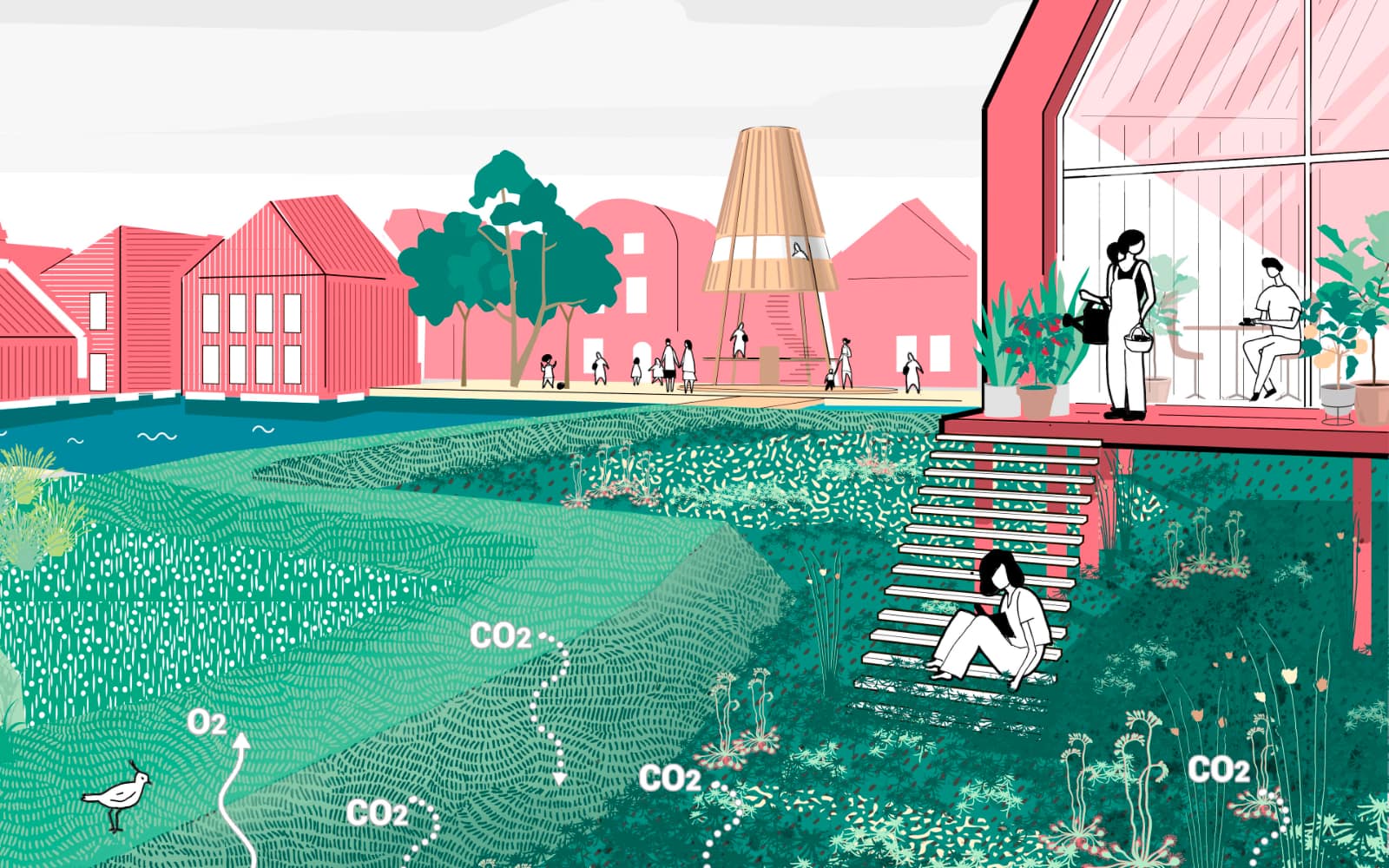Engaging Experimental Drawing Methods in the Design Process
Downloads
DOI:
https://doi.org/10.47982/spool.2025.2.04Keywords:
Gaia-graphic representation, hand drawings, influence map, landscape architecture, more-than-humans, peat, social-ecological systemsAbstract
This essay explores integrating experimental graphic methods into the design process to engage with more-than-human worlds. It is based on the graduation project ‘RE-Peat: Different Futures for the Peat Polders, a Social-Ecological Landscape in the Netherlands,’ which aims to transform degraded peatlands. Through various representation techniques, such as hand-drawn perception drawings and Gaia-graphic representation, peat is positioned as an actor and a design tool. Such methods aim to foster environmental sensitivity and holistic design ideas, acknowledging the needs of both human and non-human actors.
How to Cite
Published
Issue
Section
Categories
References
Aït-Touati, F., Arènes, A., & Grégoire, A. (2022). Terra forma: A book of speculative maps. MIT Press.
Arènes, A., Latour, B., & Gaillardet, J. (2018). Giving depth to the surface: An exercise in the Gaia-graphy of critical zones. The Anthropocene Review, 5(2), 120-135. https://doi.org/10.1177/2053019618771070 DOI: https://doi.org/10.1177/2053019618782257
Berkes, F. (2011). Restoring unity: The concept of social-ecological systems. In Ommer, R. E., Perry R. I., Cochrane, K., & Cury, P. (Eds.), World fisheries: A social-ecological analysis (pp. 9–28). Wiley-Blackwell. Oxford. https://doi.org/10.1002/9781444392241.ch2 DOI: https://doi.org/10.1002/9781444392241.ch2
Berkes, F., Ibarra, M. A., Armitage, D., Charles, T., Loucks, L., Makino, M., Satria, A., Seixas, C., Abraham, J., & Berdej, S. (2016). Guidelines for analysis of social-ecological systems. Community Conservation Research Network.
Latour, B. (2007). Reassembling the social: An introduction to actor-network-theory. Oxford University Press.
Latour, B., & Weibel, P. (Eds.). (2020). Critical zones: The science and politics of landing on Earth. MIT Press.
Mahaswa, R. (2023). Bruno Latour and actor-network-Anthropocene. Transversal: International Journal for the Historiography of Science, 12(1), 23-45 https://doi.org/10.24117/2526-2270.2023.i14.05 DOI: https://doi.org/10.24117/2526-2270.2023.i14.05
Tsing, A. L., Deger, J., Keleman Saxena, A., & Zhou, F. (2021). Feral atlas: The more-than-human Anthropocene. Stanford University Press. https://doi.org/10.21627/2020fa DOI: https://doi.org/10.21627/2020fa





